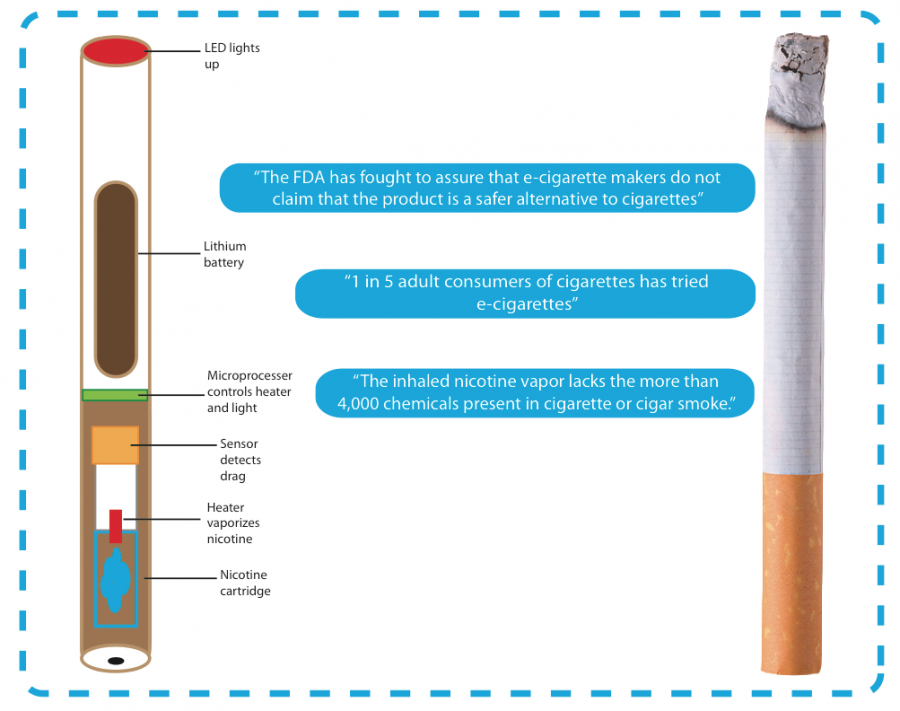Since electronic cigarettes were introduced to the market in 2002, they have continually increased in popularity. Now, in 2013, they are expected to double in sales, said professor of medicine Dr. Alan Blum.
“The Centers for Disease Control and Prevention estimates that one in five adult consumers of cigarettes has tried e-cigarettes,” Blum said.“That would be between eight and nine million people.”
Blum is an authority on tobacco medicine and is the director of The University of Alabama Center for the Study of Tobacco Medicine. He established the center in 1999. Blum said electronic cigarettes are based off of a nicotine vapor.
“The e-cigarette has a disposable cartridge with a liquid mixture of nicotine, flavoring and chemicals such as propylene glycol,” Blum said. “The battery powers an atomizer that heats the liquid, producing vapor that is inhaled.”
While electronic cigarettes do not have the same risk factors as conventional cigarettes, they have still been strictly monitored by the FDA.
“Ironically, although e-cigarettes do not pose the risk of conventional cigarettes, because the inhaled nicotine vapor lacks the more than 4000 chemicals present in cigarette or cigar smoke, the FDA has fought to assure that e-cigarette makers do not claim that the product is a safer alternative to cigarettes,” Blum said.
Katherine Ellis, a junior majoring in musical theatre, said she prefers to smoke a type of electronic cigarette called a Vape Pen instead of normal cigarettes. She was initially drawn by the difference in health risk, which is also what has encouraged her to continue with them as opposed to the alternative.
“I prefer ‘vaping’ over actual cigarettes, because the vape juice does not contain the harmful chemicals like tar and formaldehyde and does not produce harmful secondhand smoke,” Ellis said.
Blum said while he is not aware of whether or not this is an increasing trend among University of Alabama students, it is still used much less often than the standard cigarette.
“One study estimates the past-month use by college students at 1.5 percent, so that’s much less than conventional cigarette smoking, which is at least 20 percent,” Blum said.
The most controversial topic concerning electronic cigarettes is whether or not they should be recommended as a method to stop conventional cigarette smoking, Blum said.
“The problem that I fear is the same as for cigarette smokers who try to stop (to reduce the damage caused by tobacco smoke) by switching to smokeless tobacco or the newer dissolvable product snus (where one doesn’t need to spit): dual use,” Blum said. “That means that the individual can wind up doing both, using smokeless or an e-cigarette where smoking isn’t permitted, then smoking cigarettes wherever one can.”
Electronic cigarettes are still a developing topic, and while the information on them is still limited, they are still a better alternative than conventional cigarettes.
“Data on the safety of long term use of e-cigarettes is lacking, but if a person were to choose to smoke Marlboros or to inhale an e-cigarette, there’s no question I’d favor the latter,” Blum said.










